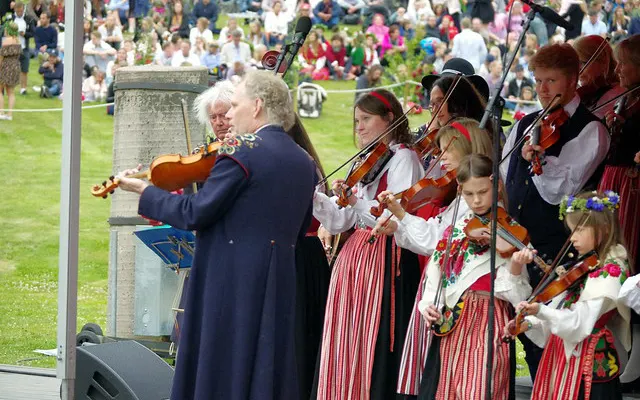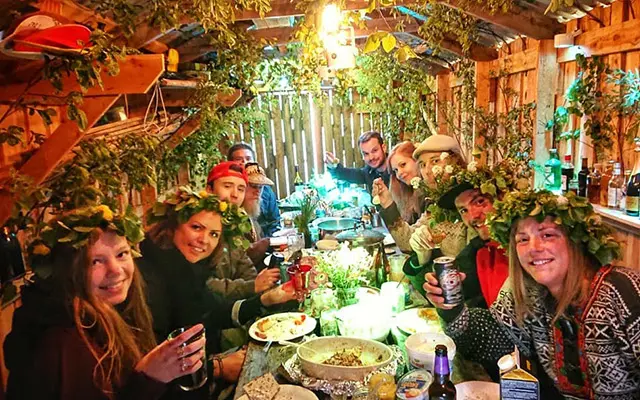What is the Swedish Midsommar festival?
Find out the origins, the meaning and the symbolization of the joyful Midsummer celebration in Sweden.
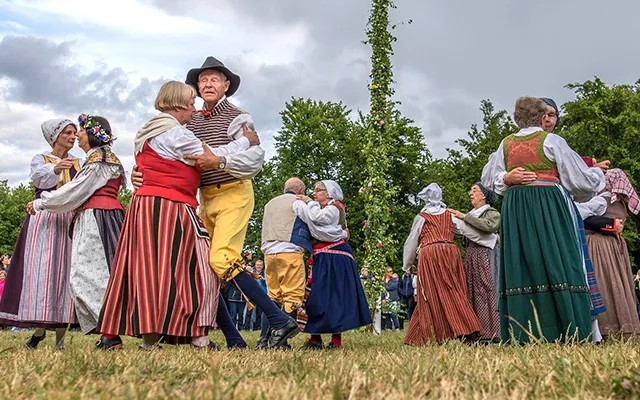
An identical element of the Swedish culture
Other Names
- Midsummer
- Summer Solstice
- Feast of Saint John the Baptist
After Christmas, Midsommar is considered as largest and most important celebration in Sweden. It is related to the summer solstice (20th-22nd of June) and given that it is such a widely appreciated tradition, many argue that it could become Sweden’s national day. It is actually not surprising that after the darkness of the long Nordic winter, Swedish people celebrate the longest day of the year to the greatest extent. Fertility and powerful natural forces are among the main aspects of the festivity.
Midsommarnatten är inte lång, men den sätter många vaggor igång. (The Midsummer night is not long but it sets many cradles in motion.)
Midsommar is a public holiday for Sweden and since in 1952, after a decision of the Swedish parliament, it became a movable festival taking place on the weekend between the 19th and the 25th of June. It is celebrated within family, friends, and communities while a series of interesting rituals and customs that are followed offer a joyful sense to the feast. Many tend to leave big cities and head to the countryside where they can enjoy the summer and experience nature to its best.
In Scandinavia, the summer days are long. Practically, in the northern part of Sweden, the sun never sets, while in the south there are only two hours of darkness during the night. The bright days together with the flourishing nature set up the ideal conditions for the outdoor celebration. Common dances around the midsummer pole, delicious fish dishes and flower decorations characterize the festivity. Last but not least, the traditional schnapps (hembränd, akvavit-distilled spirits) and plenty of alcohol establish a great party atmosphere.

Symbolisation and origins of Midsommar
Midsommar is one of the most important festivities in Sweden. Apart from the fact that it represents a joyful and entertaining annual celebration, it includes religious and spiritual aspects with deep roots in the past centuries. The majority of the population might be unaware of those mystical aspects but there is no doubt that their implications are identical elements of the collective consciousness. A closer look at the origins of the festival promises to reveal the deeper meaning and the significance of the Midsommar celebration.
Pagan roots
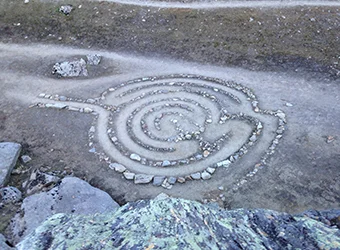
The Swedish Midsommar is related to pre-Christian sun-worshipping traditions. Being celebrated during the summer solstice points out the significance of sunlight for the people of northern climates.
According to pagan beliefs, the magical summer twilight that replaces the winter darkness is a source of powerful and secret forces. Mother Nature was honored through sacrificial feasts that were occurring during this period of the year. Moreover, it was the time when natural entities like rivers, trees, flowers, and wells would obtain an existential form, as well as the witches, would meet the evil.
The longest day of the year and the vibrations of the thriving nature were always a source of spiritual inspiration and a moment of worship to the miracle of life.
Christian connotation
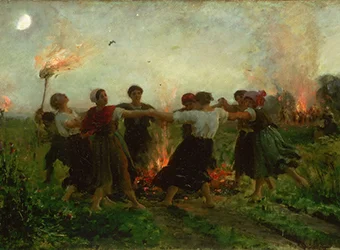
After the 10th century when Christianity arrived in Sweden, the church attempted to associate the pagan summer solstice festivals to St. John the Baptist.
According to biblical sources, St. John was born 6 months before Jesus Christ, and as Christianity successfully tied the midwinter festival of Yule to Christmas, similarly the birthday of Christ’s cousin would replace Midsummer. Thus, the 24th of June was dedicated to St. John the Baptist and started to be associated with summer solstice celebrations.
In this way, the Midsommar festivity continued to be a part of collective consciousness and some of the old nature-oriented celebrations survived during the centuries. In Sweden, until 1952, the official Midsommar day was the 24th of June. Then, based on a state adjustment it started to be celebrated the weekend between the 19th and the 25th of June.
Natural fertility

Similar to many other parts of Northern Europe, the traditional Swedish celebration of Midsommar included rituals with connotations to agriculture and fertility where the whole community was involved.
In some other places, a big bonfire was the center of the celebration with dances and other practices around it. In Sweden though, due to the bright summer nights, the bonfire was replaced by another ancient symbol. This was the maypole (majstång) which was “imported” from Germany between 1300 and 1400. The maypole or Midsommar pole is related to Viking pagan ceremonies dedicated to the Goddess of fertility Freyja. As a phallic symbol which “impregnates” Mother Nature was the center of worshiping feasts for fertility and rich harvest.
Folklore
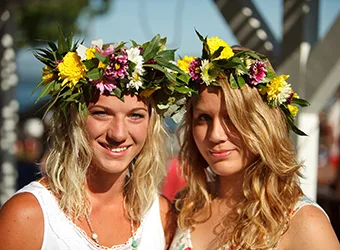
Despite the church’s effort “Christianize” Midsommar, the pagan aspects are fundamental parts of the customs and the traditions related to the celebration. Mother Nature is still at the epicenter of the feast through the admiration of the environment, the outdoor activities and the superstitions that survived through the years.
During Midsummer women and young children put wildflowers in their hair, while they bind floral wreaths with flowers and bitch twigs. The wreaths are used as maypole decorations as well as head crowns. Furthermore, a folklore tradition states that if a young woman places a bouquet of nine different flowers under her pillow, her future husband comes to her dreams.
